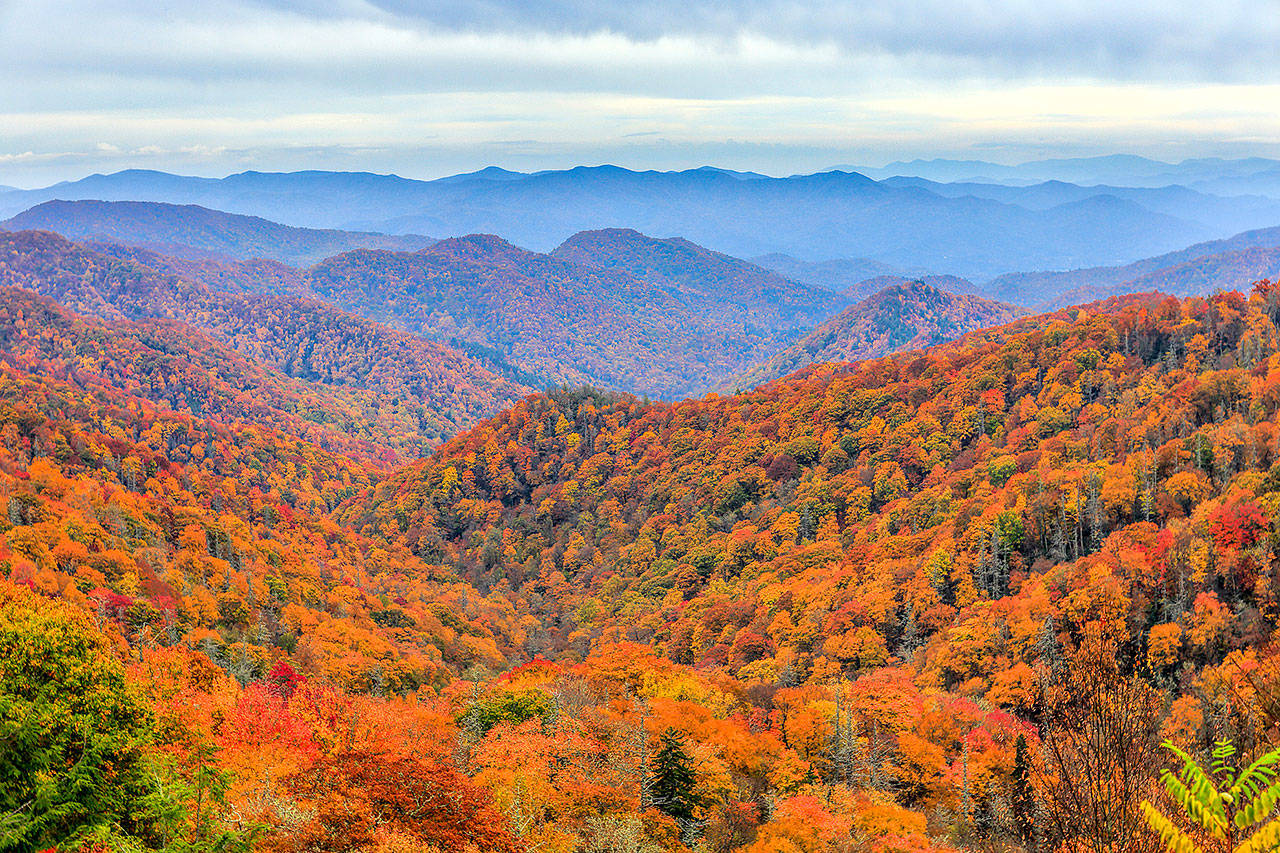By Jennifer A. Dlouhy
Bloomberg News
The Great Smoky Mountains National Park that sprawls across 522,427 acres of North Carolina and Tennessee may seem like the perfect place to practice social distancing.
Yet visitors to its lush, mountainous terrain tend to congregate at well-known spots like Clingmans Dome, where they can stand at the highest point in Tennessee, or Grotto Falls, where they can walk behind a waterfall.
That tendency has park advocates and former employees worrying about its reopening last weekend — and the plan for other national parks to follow in coming weeks at the urging of President Donald Trump — even as coronavirus infections nationwide continue to climb.
“A lot of folks sort of casually say, ‘This is a 300,000-acre park. People can spread out,’” said Kristen Brengel, senior vice president of government affairs at the National Parks Conservation Association. “But we all want to see that arch, that waterfall, that historic site. We all want to see the best features in the parks. But so does everybody else.”
For now, park decisions are being made on a facility-by-facility basis, aligned with what states are doing, Interior Secretary David Bernhardt said in an interview on Monday. The same assessments that were used to guide park closures are now being used to open them, overlaid with Centers for Disease Control and Prevention guidelines and what the local public health departments are doing, Bernhardt said.
“We are now going through evaluating,” Bernhardt said. “You’ll see things becoming more and more accessible.”
The National Park System, a unit of the Interior Department that Bernhardt runs, oversees 419 historic battlefields, natural sites, heritage areas and other attractions. Nearly 60% have some degree of access to visitors already, Bernhardt said.
It may take some time to unlock all the gates.
During a visit last week to parkland including Great Smoky, the most popular national park with 12.5 million tourists last year, Bernhardt said, he “inspected some facilities where it’s probably going to be a while before they’re open, in terms of fully functional.”
Nevertheless, the reopenings will be a relief to Americans who have spent the spring hunkered down as well as the travel industry, which has been pummeled. The sector’s estimated job losses total 8 million, according to the U.S. Travel Association, and airlines have slashed flight schedules amid declines in daily passenger counts in excess of 90%.
Outdoor or nature-focused attractions are expected to be among the early destinations for people venturing back out, possibly because they seem safer. Beaches or resorts and small towns or rural areas are among the top places that Americans now plan to visit on their first post-virus trip, according to Destination Analysts, a travel market research company.
Large crowds flocked to the Great Smoky Mountains park after it reopened last weekend. And a limited opening of Bryce Canyon National Park in Utah drew hikers eager to see its iconic red rock formations.
But, according to news reports, few visitors to Great Smoky were wearing masks, one of the CDC’s core recommendations for tempering the spread of Covid-19. Visitors also bypassed blockades walling off some areas of the park.
A rush of visitors eager to explore the outdoors could heighten risk, said Phil Francis, a former park superintendent who now heads the Coalition to Protect America’s National Parks.
“I worry that they will make a lot more people ill —that they’ll become infected, they’ll take it home, maybe take it to the adjacent communities, and that instead of lowering the curve it might actually cause a spike,” Francis said.
Just because it’s natural doesn’t mean it’s secluded, said Aaron Weiss, deputy director of the Center for Western Priorities that has urged more caution.
Consider Yellowstone National Park. While it spans more 2.2 million acres —mostly in Wyoming —visitors are lured to just a handful of destinations, including Old Faithful and the Artists’ Paint Pots.
“Yellowstone is not a dispersed park. It’s designed with a few key areas that are designed to handle lots of people,” Weiss said. “How in the world do you socially distance around Old Faithful?”
Francis, who spent four decades with the Park Service, working his way up from performing in Revolutionary War garb to helm the Blue Ridge Parkway, said Park Service workers are worried. He is calling on the Interior Department to release formal reopening plans, with guidance on how to handle congestion and what kind of protective equipment will be provided to workers.
“It’s fair that the public knows that this government is doing the right thing for its citizens and employees,” he said, “so I continue to urge these plans be shared with the public.”
The National Parks Conservation Association’s Brengel said the group hopes park superintendents have the freedom to tailor reopening plans —and even close sites again if there are problems.
“We just hope the parks have the flexibility to slowly open, to see how it’s going and if it isn’t going well, to go back to some closures,” she said. “To just take a very, very careful approach.”


